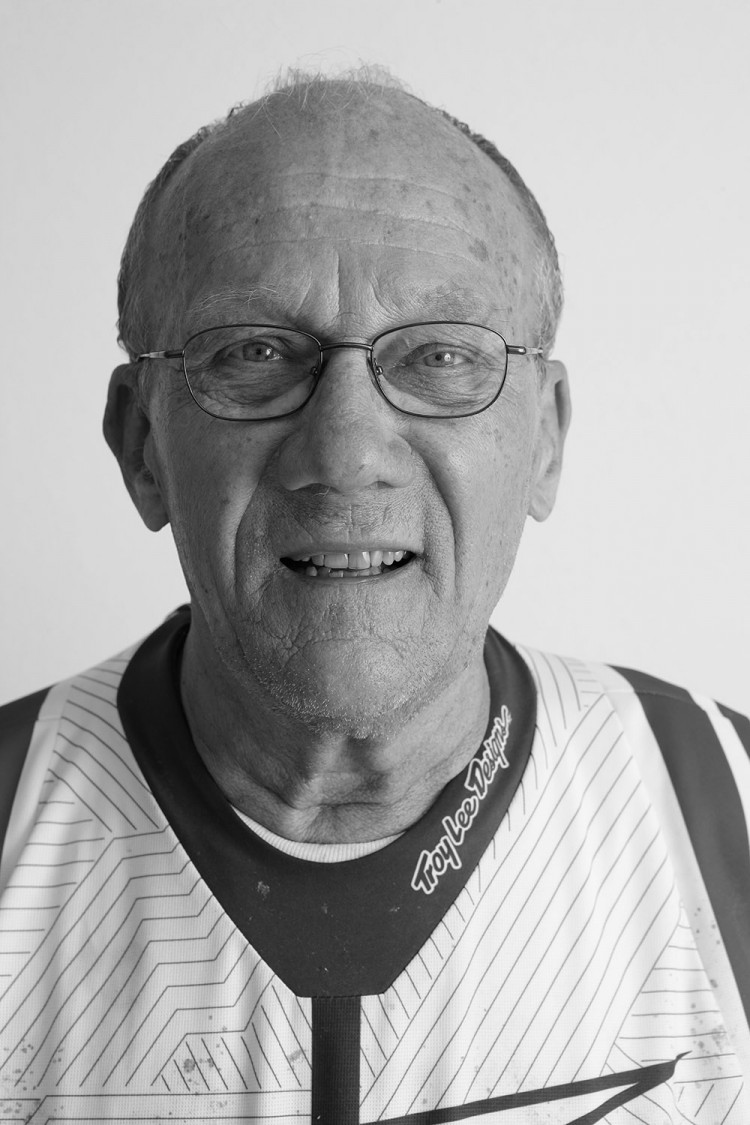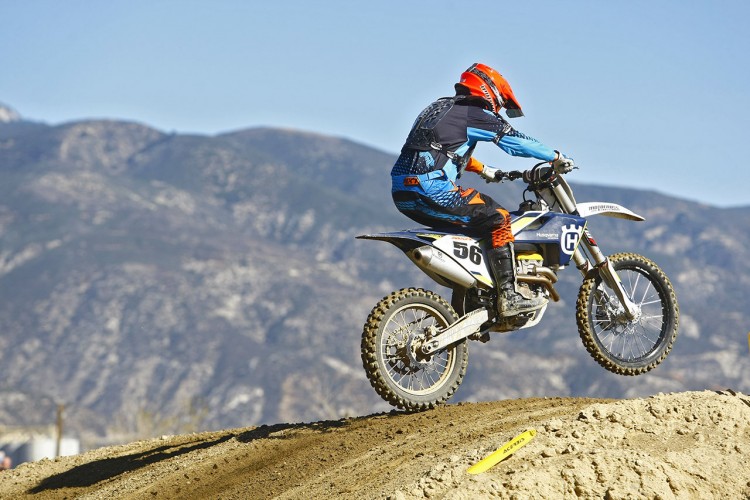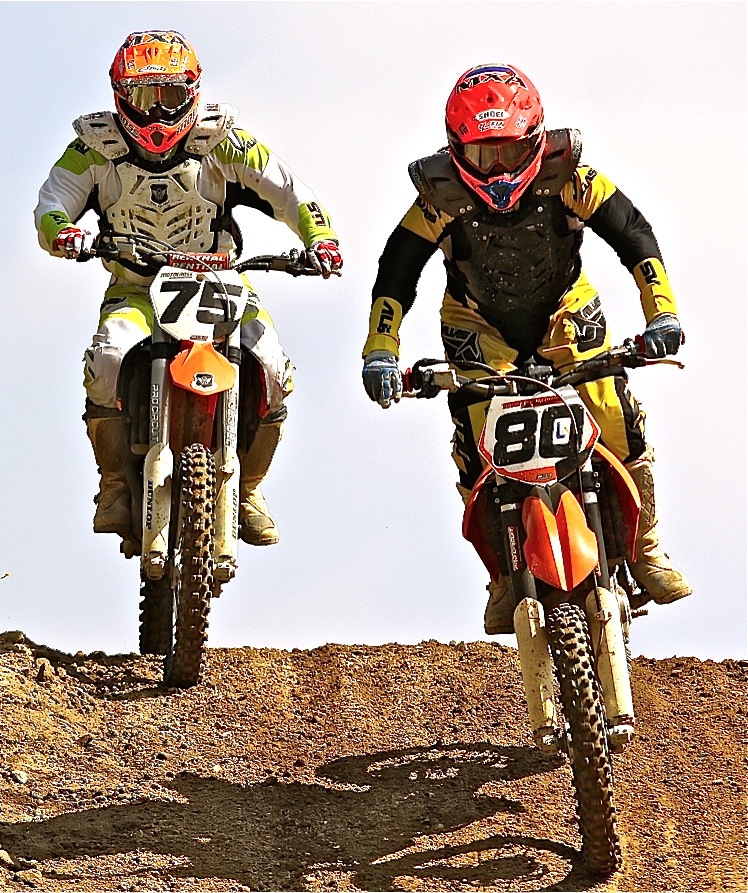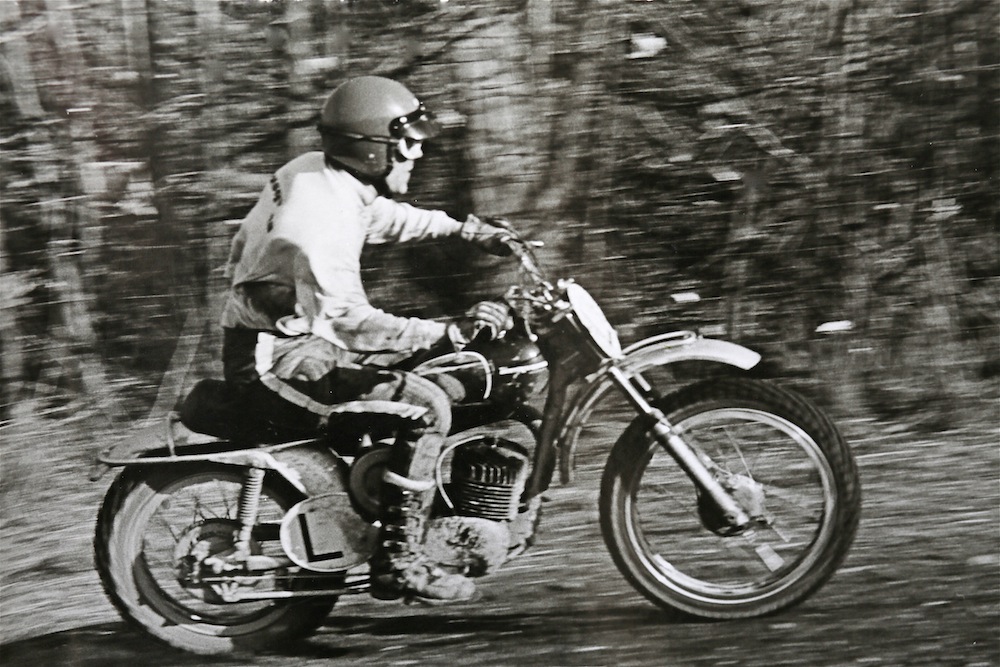INTERVIEW OF THE WEEK: LARS LARSSON
 Lars Larsson has been racing motorcycles for 56 straight years. This portrait photo was taken before the 2010 World Vet Championships. Lars is still going strong at 74 years old.
Lars Larsson has been racing motorcycles for 56 straight years. This portrait photo was taken before the 2010 World Vet Championships. Lars is still going strong at 74 years old.
By John Basher
The Swedish Grand Prix star is a legend. Lars was the first European Grand Prix racer to immigrate to the USA to race full-time (1968). Lars raced the original Inter-Am series, was the first Husqvarna factory rider in America, was an owner of the original THOR (Torsten Hallman Off Road) and has earned several ISDE Gold medals. An AMA Hall of Fame inductee, Lars splits his time between Sweden (summer) and the USA (winter).
I caught up with the amiable Swede at the Dubya World Vet Championships last week and chatted with Lars between his +70 motos. Yes, Larsson is still racing at the tender age of 74. It’s amazing to think that Lars helped introduce motocross to Americans nearly five decades ago. Ladies and gentlemen, the one and only Lars Larsson takes the stage.
 Lars on a Husky last week when he finished third in the Over-70 World Championships.
Lars on a Husky last week when he finished third in the Over-70 World Championships.
Lars, how did you meet Edison Dye? Edison Dye decided to import Husqvarna motorcycles to the United States. He went across the pond and got Husqvarna to make more motorcycles, because Husqvarna didn’t have a very big production at that time. Edison asked Torsten Hallman if he knew anyone who could do the service of selling motorcycles in America while also racing the bikes. Torsten had told Edison that I could travel to the U.S. and sell motorcycles. It was interesting, because that year – 1967 – people came up to me and said that I was going to America. I kept quiet about the whole deal, because I didn’t actually know whether it was true! It turned out that Torsten had spread the rumor. I went up to him at the Swedish Championship and said, ‘Hey, I hear I’m going to America?’ His mouth dropped. Torsten replied, “Oh, no! I forgot to tell you!” To make a long story short, I met Edison Dye down at Husqvarna in Europe and we signed a contract for a year.
What was it like coming to America? I was on the Swedish Trophy Team for the Six Days race in Poland that year. Edison came to Poland and had a Volkswagen van with him. He told me to drive the van to Brussels after the race and then fly to Chicago. At that time I didn’t speak much English. I thought Chicago was a suburb of San Diego [laughter]. I landed in Chicago and nobody was there. A few hours later an old Norwegian guy picked me up at the airport and drove me to his house. Two days later Edison Dye showed up and informed me that I needed to have a car, because I was supposed to go race. We went to the Indiana State Championship that Sunday. We got there, took the motorcycle crate out of the car, and I put the bike together at the track. People gathered around and watched. Edison told everyone within earshot that I was going to race. Some people told me that I wouldn’t be able to race with knobby tires. At that time the Americans rode with slicks that had little grooves in them. Edison played it cool and responded by saying that he and I just wanted to show off the bike to the other racers. Well, that first place trophy from the Indiana State Championship still sits on my mantle at home [laughter].
“PEOPLE DIDN’T KNOW I WAS EUROPEAN, BECAUSE I RACED IN INDIANA UNDER THE NAME LARRY LAWSON. THE FIM WOULD NOT LET ME RACE IN AMERIA, AND I WAS ONLY GOING TO BE IN THE U.S. FOR A YEAR, SO I ASSUMED A DIFFERENT NAME. BELIEVE IT OR NOT, THE INDIANA SPECTATORS LOOKED AT EACH OTHER AND SAID, ‘THOSE CALIFORNIA GUYS SURE DO TALK FUNNY.’
Were the U.S. racers mad you beat them on their home turf? They didn’t know what to think! Those guys were sliding around the track, because they didn’t have the proper tires. I just went up the insides of the corners, stopped, and took off again. A lot of people gathered around the bike after I won the race. After all, I was the Indiana State Champion in TT. They were trying to talk to me, and all I could say in English at that time was, ‘Swedish motorcycle very good quality.’ People didn’t know I was European, because I raced in Indiana under the name Larry Lawson. The FIM would not let me race in America, and I was only going to be in the U.S. for a year, so I assumed a different name. Believe it or not, the Indiana spectators looked at each other and said, “Those California guys sure do talk funny.”
Aside from racing duties, you were also responsible for selling Husqvarna motorcycles. What was that like? Edison Dye had motorcycles at the Penton house, so we drove there and loaded two motorcycles in the van. Edison then told me to drive around the country selling motorcycles. I didn’t have any idea how to sell motorcycles, but fortunately Edison taught me a trick. He said, ‘When you come to a town, stop at the first telephone booth you see. Rip out the page that lists all the motorcycle shops in the phone book. Then you visit those shops and ask if they would like to buy a Husqvarna.’ Then he left me! That was Edison Dye in a nutshell. I guess he trusted me. Edison told me that when I needed money I should call him and he would send money to the next town I was supposed to drive to. He had me over a barrel, so to speak!
Were you successful in selling Husqvarna motorcycles to American dealerships? I sold a lot of bikes the first few months. I set up quite a few dealerships back east. I was there for 2-1/2 months. During my time I went north to Oregon, Washington and Idaho. Then I went to Texas, and I didn’t sell a single motorcycle there.
Why did you have trouble in Texas? I was told that the first time I visit people in Texas, they would listen to me, but they wouldn’t take me in. They were right. I was told ‘No thanks’ at every single motorcycle store I went to. I will say the people were very friendly to me. Here’s a funny story about Texas. I was a professional sportsman back in those days. I didn’t drink alcohol or party. However, I really wanted a cold beer at the end of a long day after not selling any motorcycles. I stopped at a restaurant and the waitress brought me a menu. I tried to order a beer, but she said, ‘You’re in a dry county, honey.’ I responded, “I don’t care what brand of beer it is, just as long as it’s cold.” She looked at me funny.
How were you received at the races? I was invited to do some races here and there. Racers said they could teach me how to ride, and I beat them [laughter]. They got really mad and took the first place trophies away. They said I was a factory rider who came to America to steal trophies. I still laugh about that. I went to an Enduro one time. I had no idea what an Enduro race was like in the U.S. Granted, I came away from Poland with a gold medal on the Swedish Trophy team. At every checkpoint I came to in the U.S. Enduro the course marshalls told me I was riding too fast. I slowed down, but I was still getting yelled at. Finally, I felt I should have just gotten off the bike and pushed it to the next checkpoint. The guy that won it finished the race 16 minutes after me. I had been penalized 27 points, because I got to the checkpoints too early. I couldn’t understand it. It made me feel like I was in Texas trying to order a beer all over again [laughter].
“MOTOCROSS CAUGHT ON IN AMERICA BECAUSE OF THE AMERICAN MENTALITY. THE U.S. CHANGED THE SPORT. RIDERS FIGURED OUT HOW THE EUROPEANS WERE RIDING, AND THEN THEY MADE IT BETTER BY COMING UP WITH NEW TECHNIQUES. THEY FIGURED OUT HOW TO JUMP. U.S. RIDERS CREATED SOMETHING NEW OUT OF SOMETHING OLD.”
Are you surprised with how far the sport has progressed? No. Motocross caught on in America because of the American mentality. The U.S. changed the sport. Riders figured out how the Europeans were riding, and then they made it better by coming up with new techniques. They figured out how to jump. U.S. riders created something new out of something old. The Americans weren’t always as flawless as the European racers, but they sure got the job done. Then Supercross started, and they furthered the technique of using the bike. Sometimes I wonder if the Europeans have caught on. I think they have, but Supercross is something else. It was fantastic to be a little part of motocross in America, and I’m happy to see how the sport has evolved. I had some motocross schools in the U.S. I actually had a motocross school at Pearl Harbor, Hawaii, on the Naval base.
What have you learned about American motocross racers? Americans can’t leave anything alone. They buy new motorcycles, and instantly they have to change the suspension and buy a lot of bling bling. They strive to make things better, regardless of the cost.
Who is the greatest motocross racer of all-time? There are actually two racers that come to mind. The first is Joel Robert, and the second is Marty Tripes. Marty came out of the womb with handlebars in his hands. That kid had the most natural talent I’ve ever seen on a motorcycle. Sure, he had a few flaws, because otherwise he could have been the World Champion many times. In my opinion, Tripes was such an incredible talent, and that’s why I rate him so highly. The same goes with Joel. The Europeans were extremely good in those days, but I have never seen anyone else do some of the things that Joel Robert could do. It’s true there are faster racers, but Joel and Marty had the complete package. There are some amazing racers from the current generation, but in my mind Joel and Marty still stand out.
What’s your favorite bike? At the moment it’s a 1988 Yamaha YZ250 that I restored. It has conventional forks. For an old guy at my speed, the suspension is beautiful. These modern bikes are tough for me. Whenever I hit a jump or land hard, the new bike forks feel like there are steel rods in them. I don’t get along very well with the new bikes, but that has just started happening within the past few years. Age takes its toll. I am smart enough to realize that. I know how to go fast in some parts of the track, but my brain holds me back from making poor decisions. I ride my speed and enjoy it. There’s always another race, and I would like to race for a few more seasons.
 Lars Larson (80) and Jody Weisel (75) have been racing against each other for decades. They always find each other on the track.
Lars Larson (80) and Jody Weisel (75) have been racing against each other for decades. They always find each other on the track.
How many races have you competed in over the years? I can’t really put a number on it. I’ve raced for 56 years, and anywhere from 25-30 races a year. You can multiply it out for yourself [note: it’s 1400 races on the low end and 1680 on the high].
Do any particular races stand out? I don’t really know. In Enduro, I still remember racing through the Berkshire Mountains one year, when I beat Dick Burleson and a bunch of other great riders. I loved racing in New England, because it reminded me of being back home. In motocross, the races blend together.
In your mind, does it seem like you’re riding as fast as you did when you were in your prime? [Laughter] No. I pace myself when I ride now. There are moments when I know that I hit a corner well. At the same time, I realize I’m going extremely slow. I still love to ride motorcycles, and the camaraderie is very special. I’m honored to be part of the MXA wrecking crew, so I get to ride different bikes. Jody Weisel and I can still have our battles on the track. This is my 56th straight season of racing. I can’t see myself in a sailboat, and I don’t like to golf. Motocross is it for me.







Comments are closed.